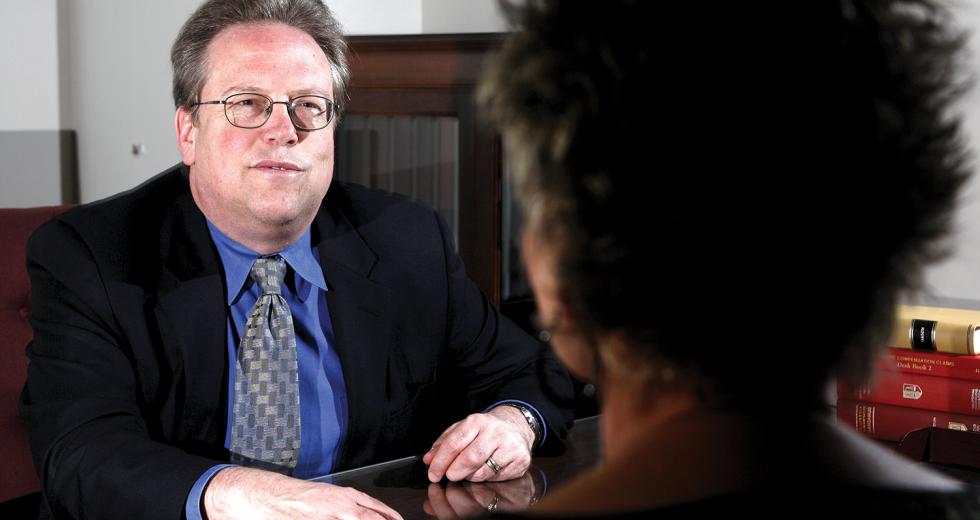The only thing certain in the world of California workers’ compensation insurance right now, is that it’s uncertain.
After major reforms to the system in 2004, a Democratic governor took office this year, bringing with him a reputation for unpredictability and no mention of workers’ comp. Add new players to the political and administrative landscape, a sustained economic recession, the state budget deficit and health care reform, and it’s a recipe for wait-and-see politics.
While California employers are hopeful Gov. Jerry Brown will stay true to his campaign rhetoric to make the state more business-friendly as a way to create jobs, they can’t rely on former Gov. Arnold Schwarzenegger’s penchant for vetoing workers’ compensation bills.
Employers are watching for legislation in the key areas of permanent disability benefits, extension of temporary disability payments, compound medications and apportionment.
But first, Brown needs to make appointments in the area of labor and insurance regulation and make his views on workers’ compensation known.
“If anyone tells you they know what Gov. Brown is going to do, they’re making it up,” says Jason Schmelzer, legislative advocate for California Coalition on Workers’ Compensation. “He’s known to be a thinker and known for doing things that don’t make everyone happy, but in a positive way. We’re hoping he wants to keep workers’ comp costs to a reasonable level.”
From campaign to post-inauguration, Brown has been silent on workers’ comp, says Brian Watson, vice president of government affairs for the State Compensation Insurance Fund. He’s more focused on the staggering $28 billion state budget deficit, he adds.
“I think it’s safe to say Brown’s quite a bit different in his management style,” Watson says. “From what I’ve seen in the campaign and in the Capitol, he doesn’t have an entourage or handlers. He’s very engaged. But he has more pressing issues these days (than workers’ comp). The budget has eclipsed all issues in the past two years.”
That could be a good thing for employers, observers say. Watson says labor advocates consistently sponsor legislation to increase benefits to injured workers, but the so-called silver lining in the deficit and recession is the incentive for Brown to stimulate the economy. Keeping workers’ compensation costs down for businesses could spark economic recovery and allow for job creation.
“We’re hoping the rhetoric we’re hearing from the governor and leadership is the tack they’re taking,” Schmelzer says. “If we use immediate past action as a predictor of future action, that wouldn’t be good for us, but 2011 is a different year, and we’re taking them at their word.”
Brown has been silent about workers’ compensation, specifically, and even new Insurance Commissioner Dave Jones has given little attention to the system.
“We don’t know about this administration because there wasn’t a lot of talk about workers’ comp in the election,” Schmelzer says. “We’re optimistic the governor will be consistent with his election message, that jobs are his focus.”
With the state’s 12.5 percent unemployment rate and workers’ compensation insurance counting as a hefty percentage of payroll costs, “increasing premiums is probably not a wise move,” Schmelzer says.
That unemployment rate, combined with a sagging economy, has put pressure on the workers’ compensation system, says Mark Webb, vice president of Pacific Compensation Insurance Co. The frequency and severity of claims filed during a recession drops as employees fight to keep their jobs. But the fewer dollars paid to workers takes its toll.
“The economy continues to put pressure on the system,” Webb says. “Because of the decreased payroll, the amount you have to spread your losses over diminishes.”
California in particular suffered from state worker furloughs, which cut payroll and delayed paperwork processing.
“In some cases, it means we’re paying temporary disability payments longer,” Webb says. “This all drives up costs.”
Webb predicts the Legislature and governor’s office is unlikely to increase workers’ comp benefits in the short term. But if the business community feels there are improvements in the system, they may allow some benefit boosts.
The proposed budget released by Brown gives some insight into the future of workers’ compensation, he says, including increased regulation of payments into the system.
“The attorney general is targeting the ‘underground economy,’ which lifts all boats,” Webb says.
Schmelzer worries that Democrats and labor interests had the luxury in the past of presenting Schwarzenegger with bills aimed at expanding benefits and costs to employers, knowing that the Republican governor would veto them.
“They knew some bills would get vetoed by Schwarzenegger. That was abundantly clear,” Schmelzer says. “We’re hoping they temper that now. We know some bills will get introduced, and the big question now is if the governor will sign them.”
He agreed that cutting costs to businesses and employers would revitalize the state’s economy.
“Without private sector stimulation, we can’t plug the deficit,” Schmelzer says. “Higher costs of doing business makes California less competitive.”
There are some unknown quantities in Brown’s administration also, with only one appointment made as of mid-February, that of Marty Morgenstern to the position of secretary for the Labor and Workforce Development Agency.
The chairs of key committees are awaiting appointment. Carrie Nevans, the acting administrative director of the Division of Workers’ Compensation, died in February, leaving that post vacant.
While Jose Solorio has been appointed as the chair of the Assembly insurance committee, the Senate counterpart awaits appointment.
According to the Association of California Insurance Companies, the reforms are succeeding. As of June 30, 2009, the average cost of workers’ compensation coverage per $100 of payroll was down to $2.33. The treatment of injured workers is being guided by scientific, evidence-based standards, and injured workers are returning to work at higher rates. Insurance premiums have been cut by more than 50 percent since the enactment of the reforms. More insurance companies are competing in the California workers’ compensation insurance market.
Barry Hinden, president-elect of the California Applicants’ Attorneys Association, which advocates on behalf of injured workers, says the reforms have been disappointing to employees. Disability compensation to workers has been reduced by as much as 60 percent. The number of workers’ compensation claims has been cut in half since 2004, but not the number of injuries.
Hinden says the association wants the governor to restore the choice of a doctor to disabled Californians. This was a right that was afforded originally by Brown in his prior stint as governor and taken away in Schwarzenegger’s reforms, he adds.
Schwarzenegger also put a cap on temporary disability compensation, limited physical therapy to 24 lifetime treatments and limited judges’ power to order additional compensation when needed.
Hinden also is concerned about the Legislature twice voting to stop insurance companies’ discrimination in disability compensation, criticizing the practice of insurance carriers reducing compensation based on risks associated with gender, race and age.
California’s disabled workers are routinely compensated less than their counterparts in any other state, Hinden says.
“As a result, many injured workers are turning to group health policies, social security, disability and other public providers because they can’t get medical care from the insurance companies,” he says.
Workers’ compensation advocates and analysts are watching several major issues as bill introduction in the state Legislature began in mid-February.
One element that was radically revised in Schwarzenegger’s workers’ comp reform was the law governing apportionment of permanent disability benefits. Permanent disability is awarded to injured workers with residual permanent effects from a workplace incident. Prior to the reform, awards were based on a doctor’s assessment assigning a percentage reflecting diminished capacity to compete for a job in the open market.
Now employers are watching for legislation that might affect this system of apportionment. Observers expect another debate over permanent disability benefits or how much money an injured worker gets. Schmelzer says employers have long acknowledged that benefits may be low in some circumstances, but many want to push benefits to pre-reform levels, which are too high.
Also, some cases that would allow employees to step outside the confines of the existing boundaries and get higher awards are winding their way through the state court system.
“We’ve tried to establish a policy of consistency, uniformity and objectivity,” Schmelzer says. “Historically, we’ve always believed an increase in permanent disability payments should be based on sound data. We believe the award shouldn’t vary based on the aggressiveness of the attorney. Two people with the same impairment should get the same award. These decisions open up avenues of litigation that drive up the cost of litigation.”
Mark Sektnan, president of the Association of California Insurance Companies, says the governor and his administration may leave a mark on permanent disability benefits after all. The 2004 reform included a provision requiring an update of benefits in five years.
“The increase was calculated, but the state couldn’t afford the increase,” he says. “The Brown administration may be inclined to put through an increase, but the economy will drive that.”
Market conditions, including higher medical and pharmacy costs, are driving insurance costs up, Sektnan says. California went to a system of using the Medi-Cal fee schedule for drugs in 2003, but people were finding ways to get around the schedule until changes in 2006 shut down the practice.
“Now, the issue is compound medications,” Sektnan says, which is the practice of blending two or more drugs to exempt medications from the fee schedule. “We’re working on legislation to stem cost increases for compound drugs.”
Sektnan is also concerned about the viability of some insurance companies.
“For State Fund, the loss ratio has gone up to 140 percent,” Sektnan says. “That means for every dollar they bring in, they lose $1.40. That’s not sustainable. A competitive marketplace will dampen rate increases, and then we need to start looking to be sure these companies are solvent.”
Watson says workers’ compensation benefits are cyclical. The years after the reform saw controls in cost increases and benefits, but that could be changing soon.
“It’s like a pendulum swinging between reducing costs and increasing benefits,” he says. “If history is any indication, it may start to swing back. We’re concerned about that, and we’re watching for signs of that. There could be trends toward increasing permanent disability benefits and extending death benefits.”
Recommended For You

Compensation Boomerang
An overcorrected workers' comp system seeks balance
In 2003, California’s workers’ compensation rates led the nation, setting off a debate about the cost of doing business here. Enter former Gov. Arnold Schwarzenegger and his sweeping 2004 reforms to the system — everything from disability payments to medical care guidelines to return-to-work benefits got an overhaul.

Health Care Heads-Up
Insurance clarity is on the way
The U.S. Supreme Court’s decision in June to uphold the Affordable Care Act briefly tempered some of the political brouhaha surrounding the new health care law. But partisan rhetoric flared again during election season, creating more confusion about the law than clarity.



